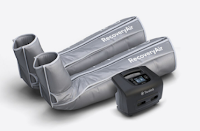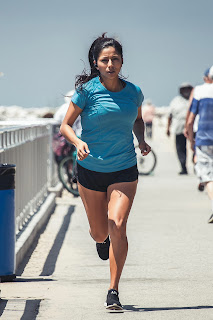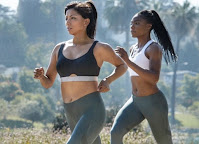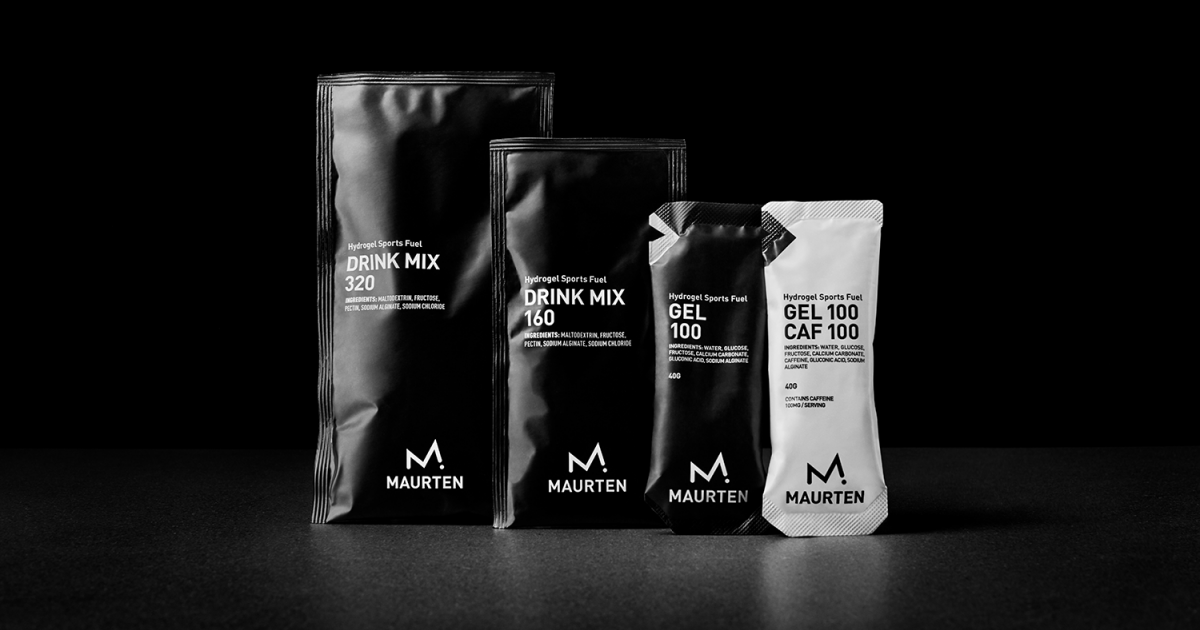Nadia Ruiz
Runner's Footprints

Wednesday, May 28, 2025
Notable Marathons, Ultras, & Countries Visited
Thursday, April 24, 2025
Boston Tips, Fueling, & Results
Hydration starts mile 2 for every mile.
Aid staggered both sides of street: first right then left.
 Mile 0-4: sharpest downhill, stay conservative
Mile 0-4: sharpest downhill, stay conservative 2025 Weather start/finish: 52/62°, 36/26% RH
Wednesday, April 9, 2025
Maurten Q&A | Race Routines
1. What is your morning routine on the day of the race?
My morning routine the day of the race is to take deep breaths as soon as my alarm goes off and say my positive mantras: today is the day I will grind. I say good morning to my love and pups with some quick kisses and cuddles. I then get ready in my kit. While I get ready, I create the mental space to zone in on my goals for the day and visualize: today is the day I will grind. Next is my morning nutrition and hydration routine ensuring I intake my Maurten DrinkMix, electrolyes, and mini breakfast that may consist of bagel with PB and walnuts or a Maurten solid if I’m on the go.
I do one last minute check that I have all my gear, nutrition, and hydration and aim to head out early to my race start. Once I arrive, I aim to keep my mind calm with my positive mantras, my deep breaths, and aim to focus somewhere quiet that I can find before it is GO time. With moments to go to the start, I run through my nutrition / hydration strategies and mental check again before I begin a mobility / warm-up routine. One last deep inhale / exhale and I’m off at the gun.
2. What is one personal thing you always do before the race?
I always give thanks for arriving to the start line of a race. There are many times when we are unsure if we are prepared, if we will make it to the start line healthy, or when life happens that may need to take priority. By starting with an attitude of gratitude, I am able to feel at peace for the moment and find joy and value in: yes, I am here and grateful that I get to do this.
3. What is your routine before going to sleep the night before the race?
I visualize. For me, every race is a gift and the outcome is never guaranteed. I often am told that: you will do great. I always appreciate the confidence; however, I also respect that anything can happen. Therefore, my goal is to aim to control the controllables and aim to navigate through the challenges that may arise.
The night before my race, I aim to have my dinner early in a calm setting, which usually means takeout or home cooked. I have found if I dine out the night before a goal race, it adds distraction and nerves to my center. After dinner, I aim to watch an inspirational movie or clip to help refocus my energy into what I want to achieve at my race. I write in my journal, review my splits, and visualize the energy and reasons why I am doing this. I allow myself to fall asleep with those thoughts in my mind and when my alarm goes off in the morning, I say: today is the day.
Thursday, November 7, 2024
20 Gifts Ideas for Runners
1. TRAINING PARTNER:Compression boots - RecoveryAir by Therabody: PRO, JetBoots, JetBoots Primw, and Prime. I have a pair of JetBoots and PRO (1st Gen). I've gifted my dad the PRO (1st Gen). I have upgraded myself and Tony with a pair to the latest releases of JetBoots Prime. It's a great investment for your partner and yourself to use regularly at home and when you travel. I've never had a problem through TSA with them in my carryon.
- 12/15 Holiday Half
- 12/22 Mt. Wilson 25K - NADIA5
- 1/19 Rose Bowl Half - 2025NADIA10
- 2/2 Surf City Half - NADIA10
- 2/24 Ventura Half
- 3/17 LA Marathon - 2025NADIA10
- Alpha Win Race Series - NADIA20
- SoCal Trail Races - NADIA
3. NEW RUNNER:
$100-200 running store gift card -- The best way to start running is with a great pair of new running shoes that fit a runner's needs. For any new runner, I recommend first to visit your local specialty running store to have your running gait analyzed for free then have the rep recommend the best shoes for you in different brands.
4. SECRET SANTA:Earbuds / Headphones - JLab have my favorite earbuds and headphones. You have several price points to choose from as low as $30 or $199 for your premium pairs. It is a perfect gift for anyone and even a great stocking stuffer. All their products deliver quality sound and have been my favorite earbuds for over a decade. Discount: NADIA15 - save 15% off.
Triswim Bath Set - I have been using SBR Sports for over a decade. I love their body wash, shampoo, conditioner, and lotion. Safe for kids or pets and great for athletes of all sports. Mix and match your gift bundles of Triswim and there are traveler's sets, too. Discount: NADIA - save 20% off.
5. INJURED RUNNER:Pain management patches - StaminaPro Patches are electroceutical charged patches with electrons from a variety of nutrients shown to reduce inflammation leading to faster recovery and performance. for recovery, pain management and performance. Some of the nutrients are branched chain amino acids, essential amino acids, arnica, beet root, bioperine, COQ10, glutathione, green tea extract, Mg, MSM, Olive Leaf, Omega-3, Tumeric, Vitamin D, and more. My entire family uses them not only during running, but also if we tweak something during a non-running related activity. Discount: NADIA15 - save 15% off.
Bodyweight support system - LEVER Movement device attaches to your at-home treadmill and can take up to 45 pounds off your bodyweight allowing you to focus on your form, return from injury safely, and/or ramp up your mileage safely. This was one of the key tools I used after my right meniscus bucket handle tear in 2021. Discount: NADIA - save 15% off any item on their site.
Hydrogels - Maurten Starter Kit allows an athlete to try several of their products in training to help explore what works best for ourselves. The Feed offers a great option to try out Maurten and other nutrition products in a goodie bag as well.
Protein - I am a huge advocate of consuming more quality protein in our daily diets. Protein powders can help us fill in the gaps. I love the protein line with CBD by Mons Pura. Try their vanilla ice cream flavor or chocolate mousse. Discount: NADIA20 - save 20% off anything. Or you can try another great new protein line with creatine or collagen products by RNWY, discount NADIA15 for 15% off any rnwy product.
Meal Delivery Service - Order a week supply of meals for your runner to help them have healthy, tasty meal options at home to save time and best part no dishes. Designed for athletes, I use Trifecta Nutrition meal delivery service with a 10 meal plan delivered every other Friday. Meals are vacuumed sealed, never frozen, last up to 6-10 days in the fridge or 3 months frozen. Explore from over 100 meal choices from clean, paleo, keto, and plant based categories. Ships to all 50 states.
7. RUNNING CLUB FRIENDS:Running Accessories -- We can never have too many. I love the options Ultimate Direction accessories offers from socks, mittens, gaiters, buffs, performance hats and ice bandanas, which helped me tremendously at my Palm Springs Triathlon in 98F. Discount: NADIA - save 20% off anything on their site.
8. RUNNING COACH:
Spa day pass -- We are reminded to pamper ourselves from time to time. Somehow, we tend to overlook this necessity often. Gift the gift of self love at their favorite local spa. They will be renewed and overjoyed. My favorite recovery wellness center is located in Pasadena called Renew Performance Center offering contrast therapy, red light therapy, floatation therapy (sensory deprivation tank), compression, and massage services. They are also offering holiday specials.
However aside from a gift, your running coach loves simply to hear from you. I personally love holiday cards with a handwritten message or letter. I believe in the power of expressing your feelings through writing. Your dedication to your training and your feedback are always the best gift for your coach -- they thrive to see you happy achieving your goals.
9. TRAVELING RUNNER:Massage gun -- There are so many to choose from on the market. Different brands and sizes. My clients have shared with me they have tried the lower priced choices and are not satisfied in the end. Gift yourself or your loved one a high quality massage tool to use at home or travel. My favorite ones are the Theragun PRO for myself and Tony, Theragun Sense for my parents (its lighter for seniors), and Theragun mini for travel. I put my mini in gear check so I may use it immediately post race. I've also traveled with all my theraguns in my carryon and never had an issue with TSA.
Recovery sandals -- What we wear in between our training session can either hinder or support our recovery. Aim to wear supportive footwear and/or sandals when traveling or throughout the day if your are on your feet all day. I love to use my recovery sandals by VELOUS either their stylish flip sandal or slides. Foot care during and in between sessions is crucially important for not only performance but also for longevity and joint health. Ladies: please opt away from the ballerina flats, flat flip flops or heels over 3 inches. There is proven studies shown how this impacts the joint health of your feet over long period use. Love your feet. Discount: NADIA20 - save 20% off any style.
Hydration Vests, Packs, Handheld Bottles - I LOVE trail running and love to have Ultimate Direction by my side on the trails. As my first and true love, I first started trail running 28 years ago. Finding the most comfortable pack or handheld for you can be daunting. Decide on what size you need then choose your color. All their packs have choices with several pockets and bottle options so you cannot go wrong. I have all the main sizes of storage capacity from 5L for racing, 10L, 15L, and 30L for my adventure all day runs. Discount: NADIA - 20% off anything on their site.
11. MOTHER RUNNER:
Monthly supply of supplements -- My first answer would be a baby jogger and second help her feel her best with premium supplements. My go-to everyday at home or when traveling are Vital 4U premium supplements. It is pre-packaged packets of 12 pills with over 75 nutrients to help support your daily nutrition. I have been using them for over a decade and also have both my parents on them, too. I rarely get sick, most notably I have not gotten sick at all between 2020-2024. Supplements help support a healthy lifestyle.
12. YOURSELF:
Monday, September 11, 2023
Why a Post-Race Reflection
Below are some questions I share with my athletes to help guide their post-race reflection. I recommend taking the time to reflect and write down all the wonderful things that can come from training for a race and the race experience itself. I do this almost for every race of my own and it always gives me great insight on what I have achieved, where my weaknesses are, and what I would like to do next. Happy training and reflecting! Every experience is a learning experience.
- Race name, date, distance, weather
- Describe the course. (Gain, point to point, race support, etc)
- Estimate finish time vs actual finish time?
- What do your mile splits show you about your pacing strategy?
- Were there any factors out of your control that impacted your results?
- Where you able to handle uncontrollable obstacles?
- Were you able to stabilize your emotions?
- What was your fueling / hydrating strategy? Did it go as expected? How could you improve it?
- What makes you most proud of this race?
- What was your mindset before the race? Do you feel you can improve this?
- What was your mindset during the race?
- How was your sleep during race week and race weekend? Do you feel you can improve this?
- How was your nutrition race week and race weekend? Do you feel it helped or hurt your performance?
- What are the three major successes in your goal race?
- Where are three major areas you feel you can improve on?
Saturday, July 1, 2023
Heat Training Tips
Should I change my workout on really hot days?
- Reduces the endurance capacity of the muscles.
- Increases the body’s reliance on carbohydrate for fuel.
- Compromises many aspects of cardiovascular function.
- During your first hot weather workouts, cut back on your exercise duration or intensity. Go easier. Train shorter.
- Gradually increase the heat stress load IF your goal is to get heat acclimated. If you load the heat stress too high or too long, you risk digging yourself too deep in a hole afterwards or worse a heat stroke. Heat acclimation can be done gradually, progressively in small amounts with recovery in between heat stress loads.
- Exercise in the early morning or evening when air temperature is likely to be cooler.
- Monitor your heart rate (HR). Slow down if your HR is higher than your target zone or if you don’t feel good.
- Drink plenty of fluids with electrolytes. Very critical.
- Pick a training route that provides lots of shade: parks or tree-lined roads or trails.
- Know the symptoms of heat stress. If you have these symptoms, stop, get cool, and rehydrate: nausea, dizziness, headache, chills, brain fog, muscle cramps, extreme out of breath, reduction or cessation of sweating.
- Train with others when it’s extra hot. They can notice if you are compromised before you do.
- Lightweight, loose, white, or light-colored moisture wicking fabrics help reflect the rays and allow better air circulation. As you may noticed, I aim to keep myself covered from excessive sun exposure because I am outdoors often and for decades. The sun not only has damaging effects if exposed to it for too long but it also accelerates aging. My hope is to protect my skin and age gracefully; therefore, I protect my skin as often as I can for three decades I have been training outdoors (3hrs boxing + 27 years running).
- UPF fabrics that protect skin from UV radiation. UD long sleeves with UPF 20+ are a great option.
- Sunscreen with at least SPF 15 to protect against both UVA/UVB rays. Reminder: UVA rays increase aging, inflammation, and potential risk of cancer. UVB rays increase risk of burn and potential risk of cancer.
- Visor or vented hat with a wide brim to protect your face and eyes.
- Sunglasses
- Ice bandana
- sleep deprivation
- infectious disease
- excess body fat
- high humidity
- depleted muscle glycogen
- poor cardiovascular fitness
- sudden increase in training
- earlier onset of sweating
- higher sweat rates
- lower body core temperature
- increased blood volume
- overall improved ability to tolerate heat
- lower heart rate response to submaximal workloads
- Drink fluids until your urine is pale yellow to clear and plentiful.
- In general, drink as much fluid as you can comfortably tolerate both before, during, and after exercise. Drinking small amounts frequently usually works better than drinking a large amount once.
- Cool beverages are more inviting to our systems more quickly than warm beverages in hot conditions.
- The stomach can only empty about 1 quart of fluid per hour into the body during exercise. If you drink more than that you could feel bloated or have the gastric sloshy feeling. Electrolytes can also assist with the absorption of water.
- You’ll often see athletes pouring cold water over their head during a race or competition. This is an effective preventative practice to delay the elevation of core body temperature. I do this often and early in a race and guide my athletes how to do so as well.
- General guidelines for fluid intake are:
- 2-3 cups about 2 hours before exercise
- 1 cup 5-10 minutes before exercise
- 1 cup every 15-20 minutes during exercise; increase in warm weather
Monday, May 1, 2023
How to Fuel for Endurance
* Electrolit bottles or powder mix for electrolytes replenishment
* lean grilled chicken with wild rice and steamed veggies
* ceviche or mariscos with pico de gallo and air popped popcorn
* Electrolit (replenish electrolytes lost)
































